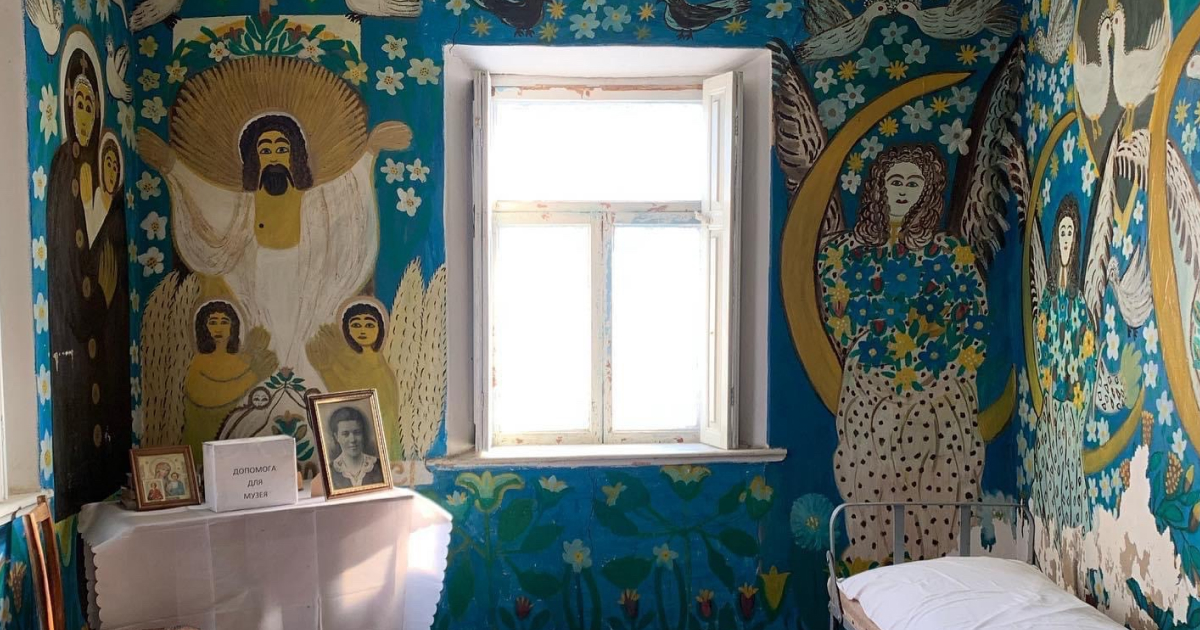The house-museum of Ukrainian artist Polina Raiko is underwater in temporarily occupied Oleshky

In temporarily occupied Oleshky in the Kherson region, the memorial house-museum of Ukrainian artist Polina Raiko was flooded due to the explosion of the Kakhovka HPP.
A representative of the Polina Raiko Kherson Regional Charitable Foundation, artist Semen Khramtsov, reported this.
The museum staff managed to evacuate.
Polina Raiko is a self-taught Ukrainian artist, a representative of outsider art. She started painting at the age of 69, and in a few years, she painted her own house, outdoor kitchen, gates, fence, and garage doors. To do this, she used the simplest and cheapest paints.
The value of these works was confirmed by both Ukrainian and foreign art critics. Raiko's work is put on a par with the art of such Ukrainian artists as Mariia Prymachenko and Kateryna Bilokur.
After the artist's death in 2004, her house was purchased by a couple of art admirers from Canada, thanks to whom the house with the drawings was preserved.
In 2008, artist Viacheslav Mashnytskyi also created the Polina Raiko Kherson Regional Charitable Foundation to preserve the house-museum. In October 2022, Mashnytskyi went missing. His whereabouts are still unknown.
Before Russia's full-scale invasion of Ukraine, this house-museum was a venue for festivals, residencies, and film shootings.
In Ukraine, Polina Raiko's house is protected by the Law on the Protection of Cultural Heritage.
In 2022, the world began to discover Ukrainian culture, including its artists and writers. For most people, Ukrainian culture did not exist, as it was replaced by Russian culture, and Ukrainian artists of the last century were banned from creating art.
The Soviet government destroyed the Ukrainian intelligentsia long before writers, poets, and artists could become world geniuses.
The Ukrainian culture of the last century did not have the opportunity to be alongside the examples of world art. Ukrainian artists were persecuted, imprisoned, and killed just because they were Ukrainian.
"Ukraine became an experimental site where the communist regime gained experience in taming and destroying culture.
The confrontation here began long before the end of World War II, immediately after the liquidation of the Ukrainian People's Republic in 1921. It was the late 20s and 30s of the last century that saw the bloodiest harvest in the elimination of Ukrainian culture," notes historian Volodymyr Viatrovych.


